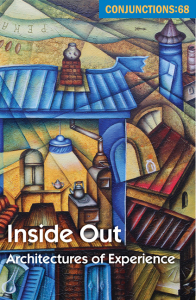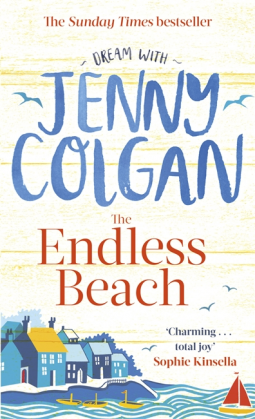 I have said it before but it always holds true: when you subscribe to a publicatiion that only comes out twice a year, it’s always a surprise when that neatly packaged journal is found lurking in the mailbox. What is it? Who is it from? Zip open the cardboard container and realize that another six months have passed.
I have said it before but it always holds true: when you subscribe to a publicatiion that only comes out twice a year, it’s always a surprise when that neatly packaged journal is found lurking in the mailbox. What is it? Who is it from? Zip open the cardboard container and realize that another six months have passed.
It’s Conjunctions #68: Inside Out: Architectures of Experience.
Here’s what the editor, Bradford Morrow, says about this issue:
To be alive is to encounter architecture. From the most solitary hermit to the most gregarious urbanite, survival itself fundamentally involves negotiating constructed spaces—huts, houses, high-rises. Architecture often plays a defining existential role in our earliest perceptions. To have roofs over our heads is desirable to most all of us, no matter whether they are made of quarried slate or rummaged cardboard, of woven wheat-straw thatch or forged corrugated steel. Childhood bedrooms, whether our own or shared with siblings or even with one’s parents and grandparents, stay imprinted in our memories long after we’ve ventured out into other rooms. The architecture of the neighborhoods in which we grow up, be they urban, rural, or suburban, also shape who we become. Every building has its own narrative that begins with an architectural idea—an office where we work, a church in which we pray, a prison to avoid, a hospital for healing. And beyond functionality, architecture strives as often as not to be aesthetically pleasing. To challenge expectations, to honor tradition, to be new.
In this issue readers will come upon walls, and the people they protect or separate.. They will discover pyramids and caves, castles and bars, seaside hotels and roadside motels, a tiny haunted house and a mansion on a Miyazaki-esque island floating in the sky. A mother and son visit a fractal museum in Maine only to have their lives irrevocably altered. On a boarding-school farm in West Virginia, a troubled boy has his first unexpected sexual encounter in an isolated room. A band of weekend urban archaeologists who salvage artifacts from buildings about to be demolished make a grim discovery but, because they are trespassing, face the dilemma of whether to report their find. A girl obsessed with bridges eventually creates single-strand spans that defy the laws of physics.
Throughout, we see the many ways in which the very materials we fashion into architectural structures reflect our deepest selves and are vivid physical extensions of our imaginations. To borrow a phrase from poet Elaine Equi, “We mark our place and it marks us.”
—Bradford Morrow
Contents
- Joanna Scott, The Limestone Book
- Andrew Mossin, The Kite Room
- Claude Simon, Archipelago and North, with an introduction by translator Louis Cancelmi
- Cole Swensen, Quartet
- Robert Clark, Father and Son
- Kathryn Davis, The Botanist’s House
- Elizabeth Robinson, Five Provence Poems
- Gabriel Blackwell, Leson
- Monica Datta, In Distrait
- Robert Kelly, Two Poems
- Mary South, Architecture for Monsters
- Brandon Hobson, Terlingua
- Lance Olsen, Blue: a chair is a very difficult object
- Susan Daitch, The Weekend Salvage Unit
- Ryan Call, No Mothers, Only Ghosts
- Nathaniel Mackey, Song of the Andoumboulou: 181
- Ann Lauterbach, Nave
- Can Xue, Euphoria, translated by Karen Gernant and Chen Zeping
- Matt Reeck, A Brief History of the Colonial Map in India—or, the Map as Architecture of Mind
- Lisa Horiuchi, A Tiny Haunting
- Elaine Equi, Perfume Dioramas
- Robert Coover, The Wall
- G. C. Waldrep, Cleeve Abbey Suite
- Joyce Carol Oates, Fractal
- Lawrence Lenhart, My Wilmerding: Wheelhouse or Runaway
- Mark Irwin, Six Poems
- Justin Noga, How It’s Gone and Done
- Karen Hays, Reconciliation Story
- John Madera, The House That Jack Built
- Karen Heuler, Here and There
- Frederic Tuten, The Café, the Sea, Deauville, 1966





